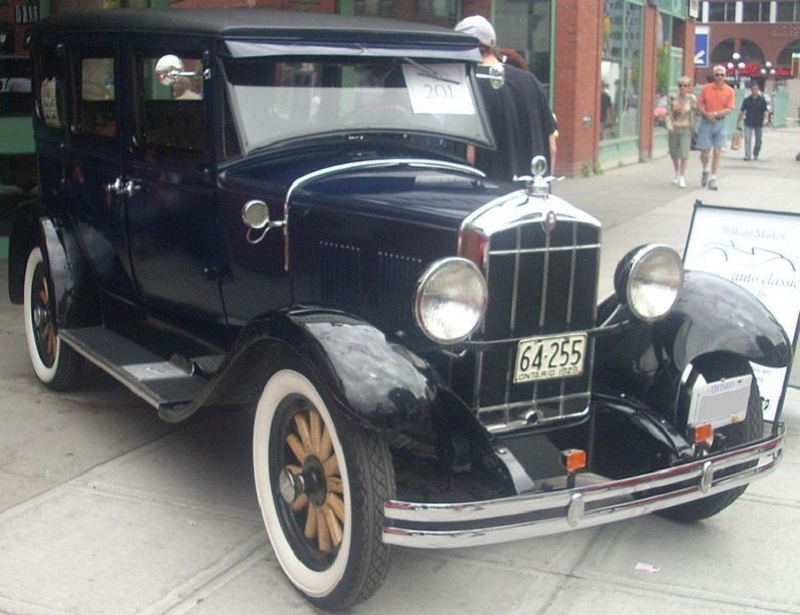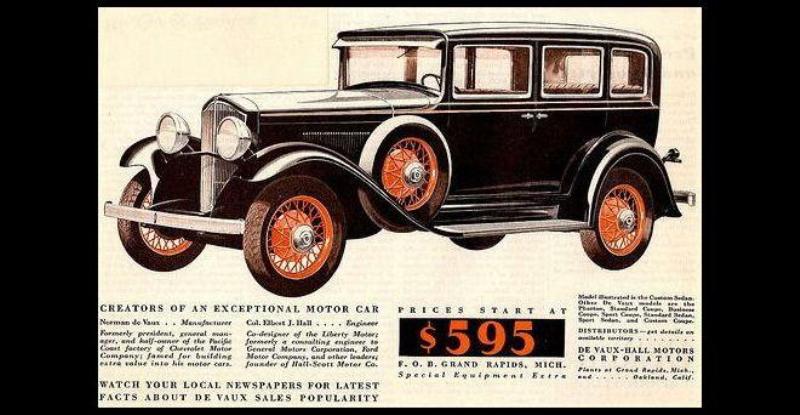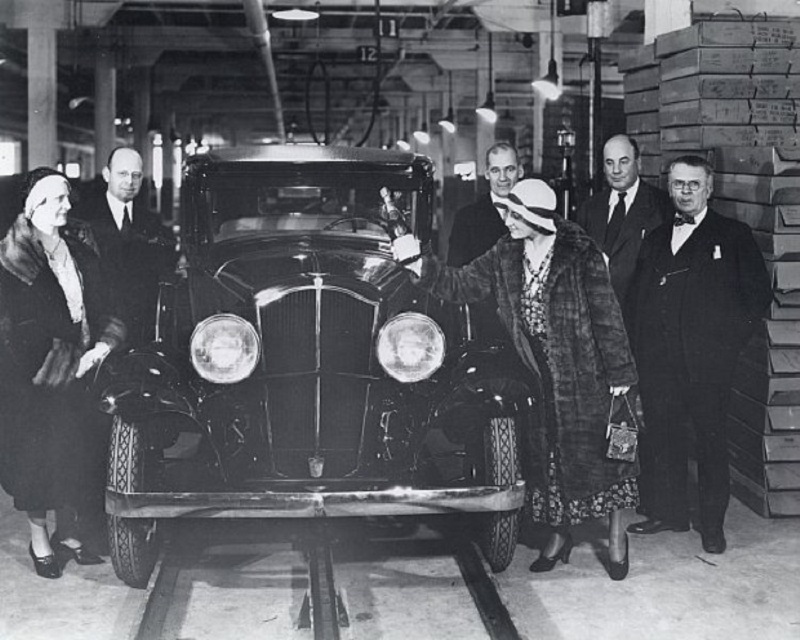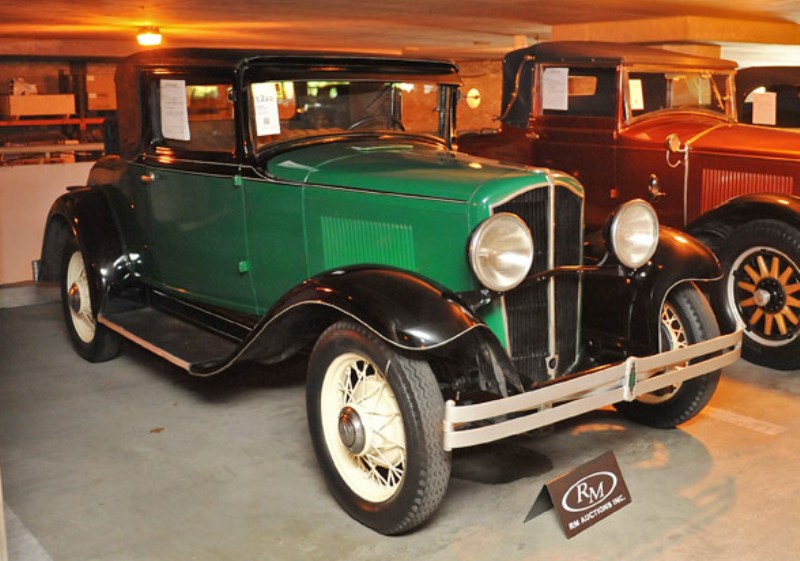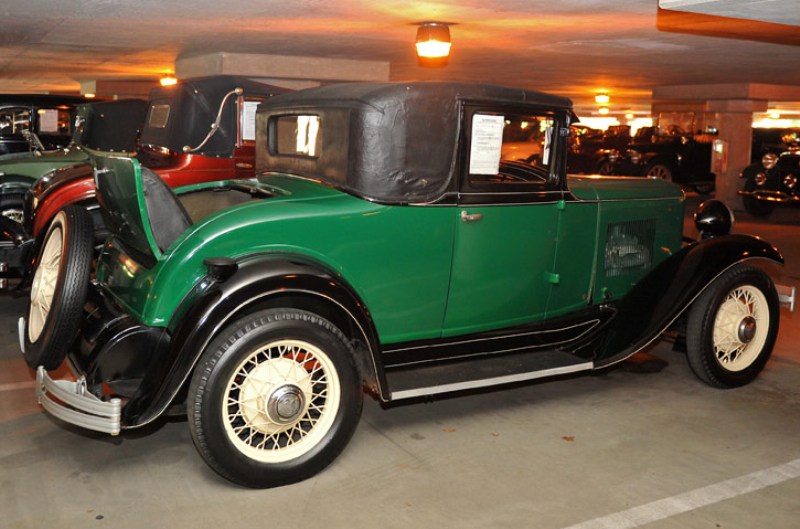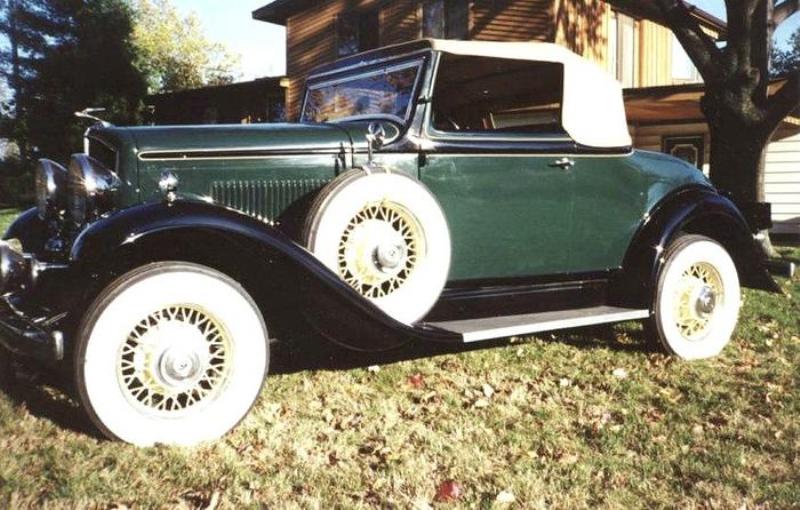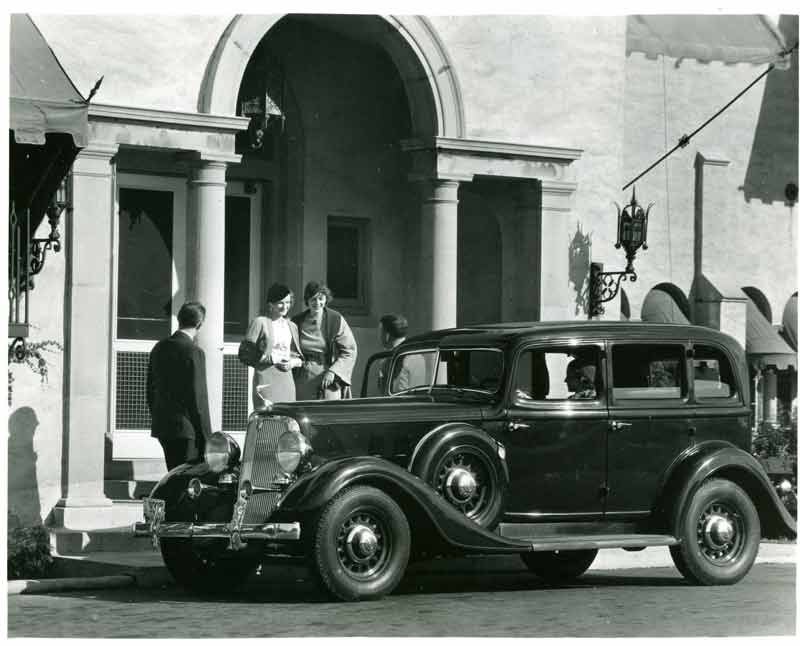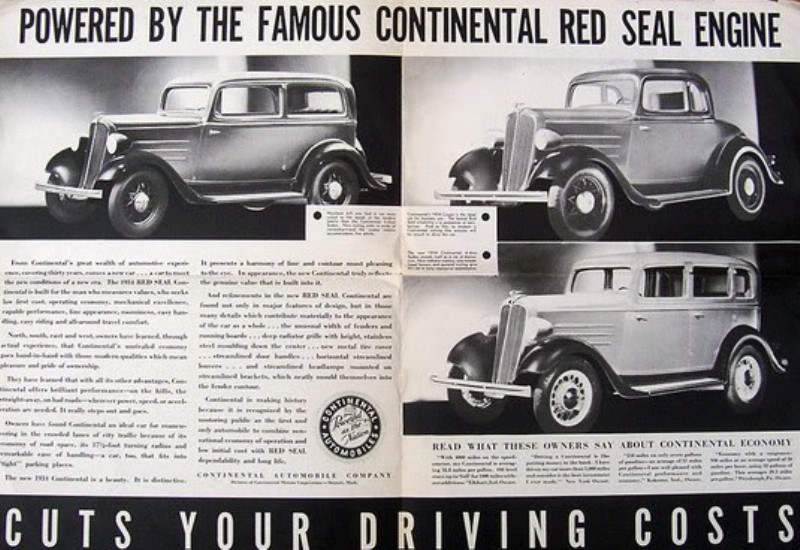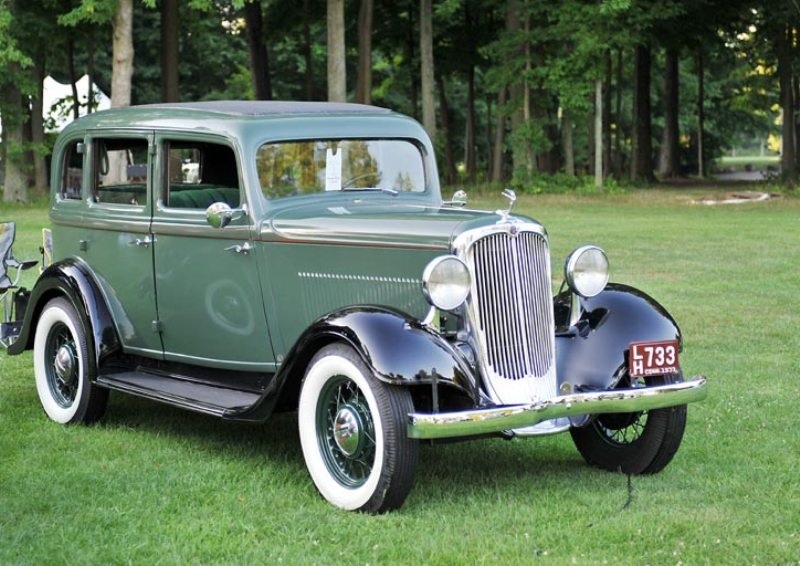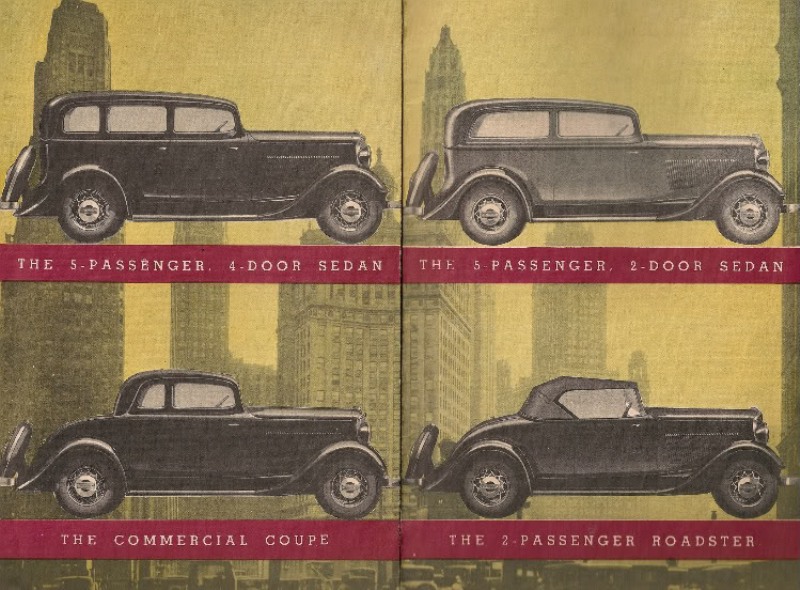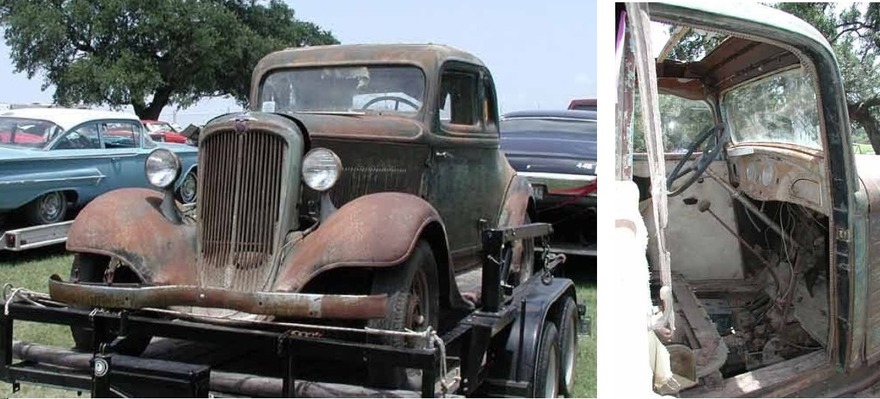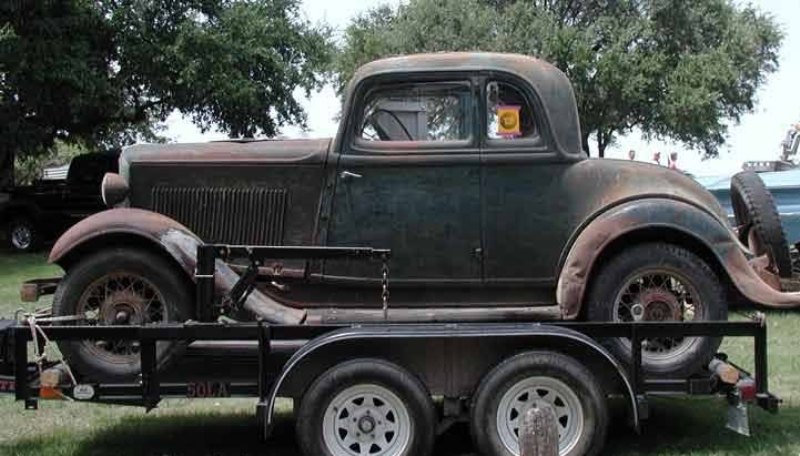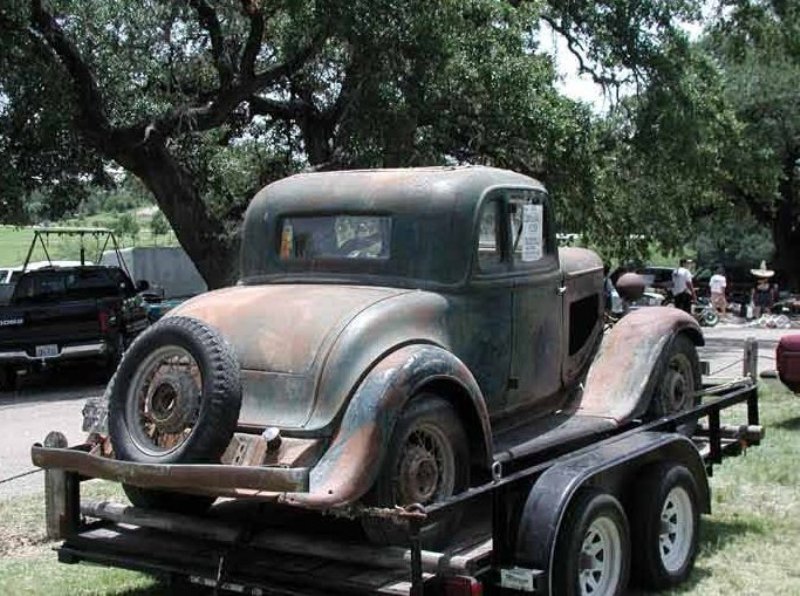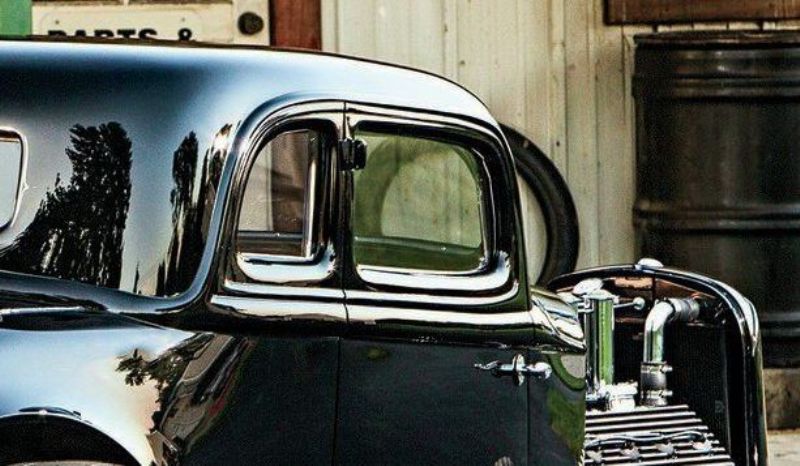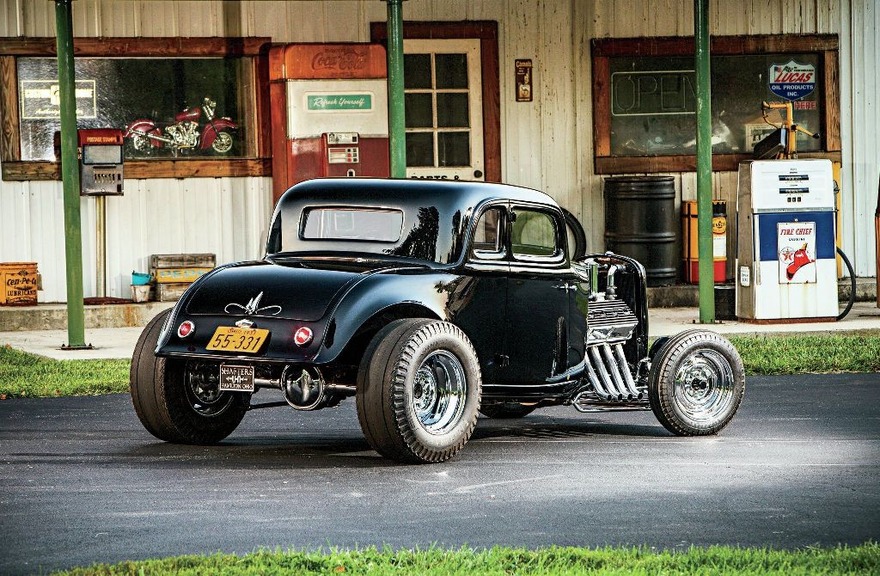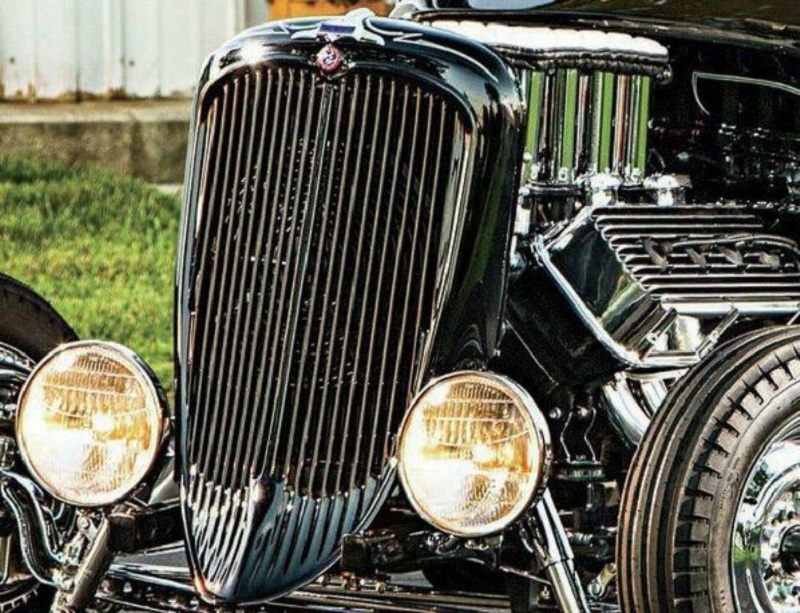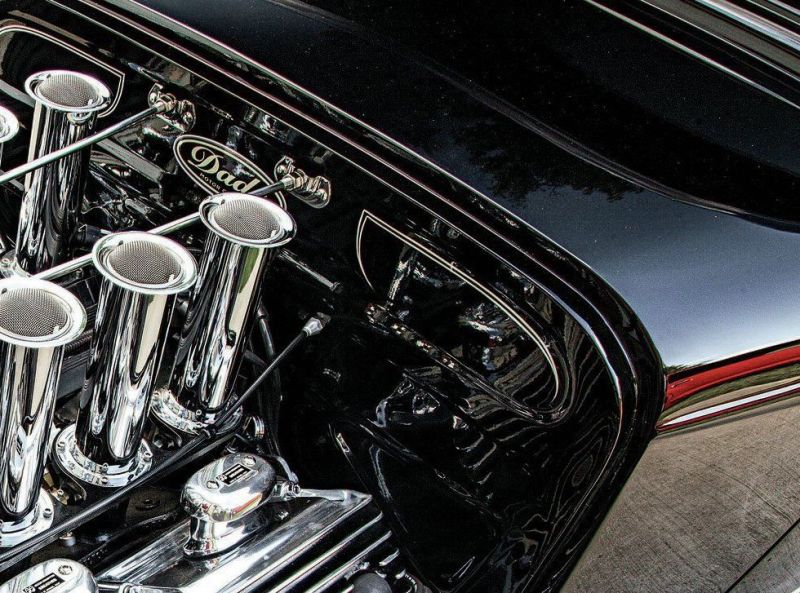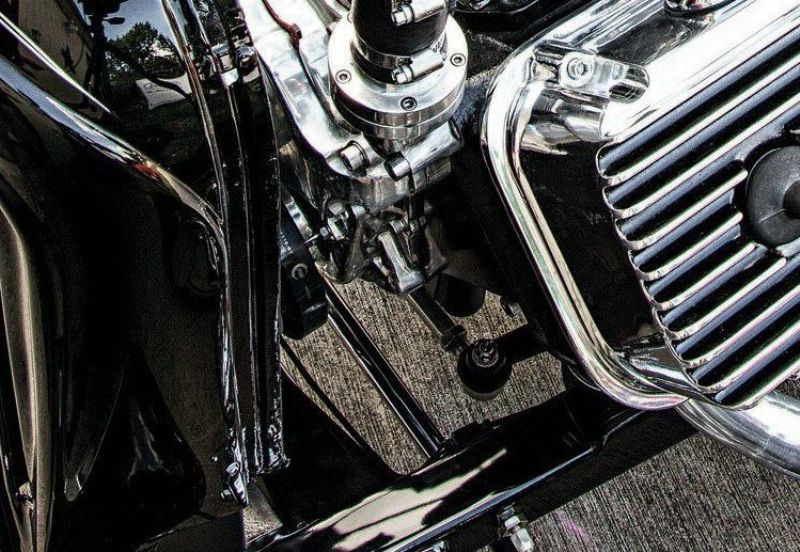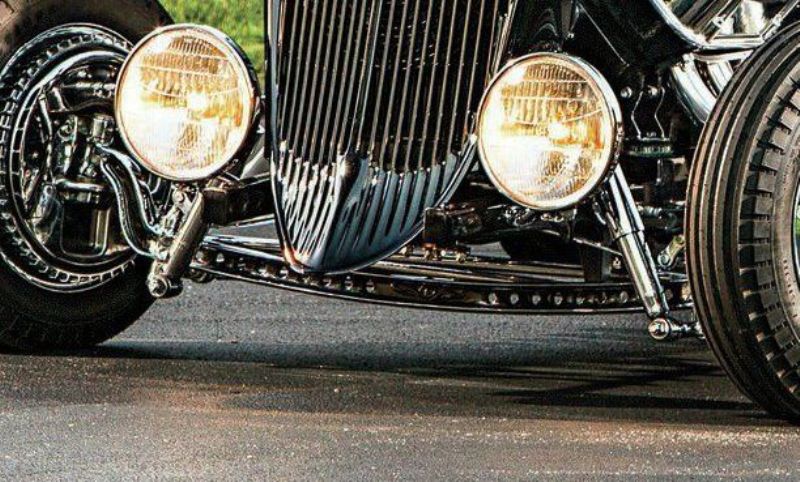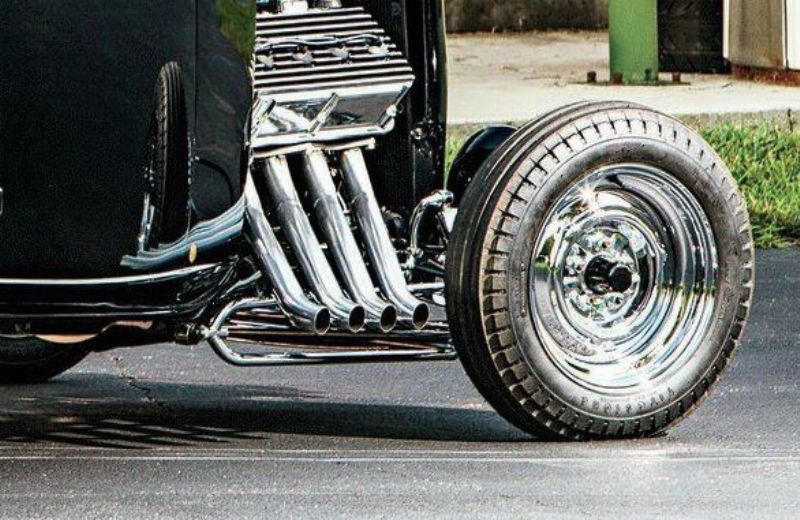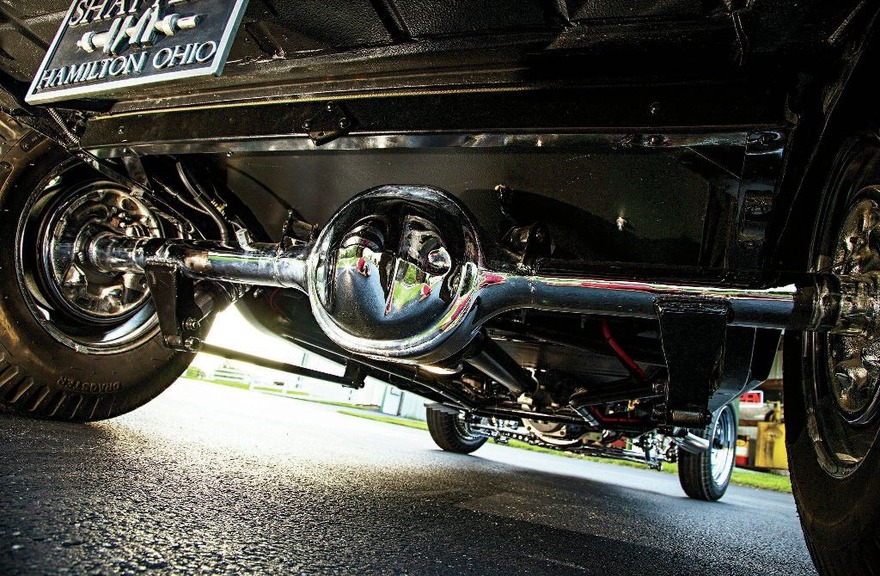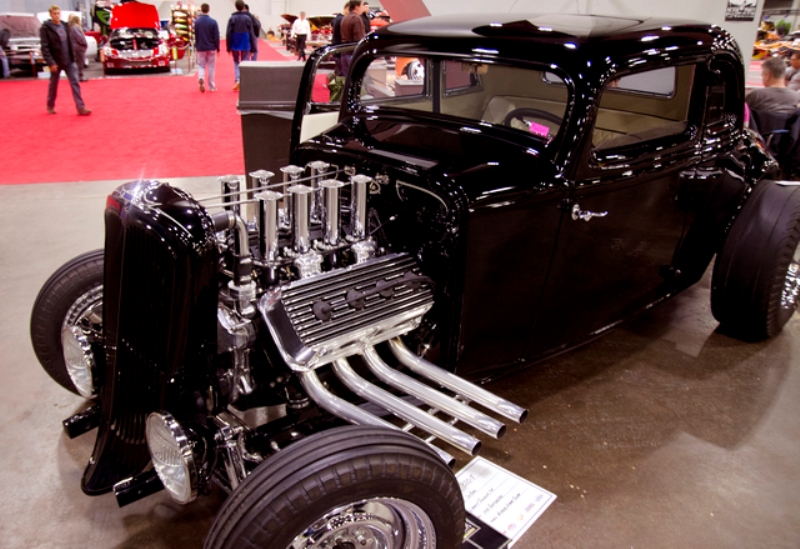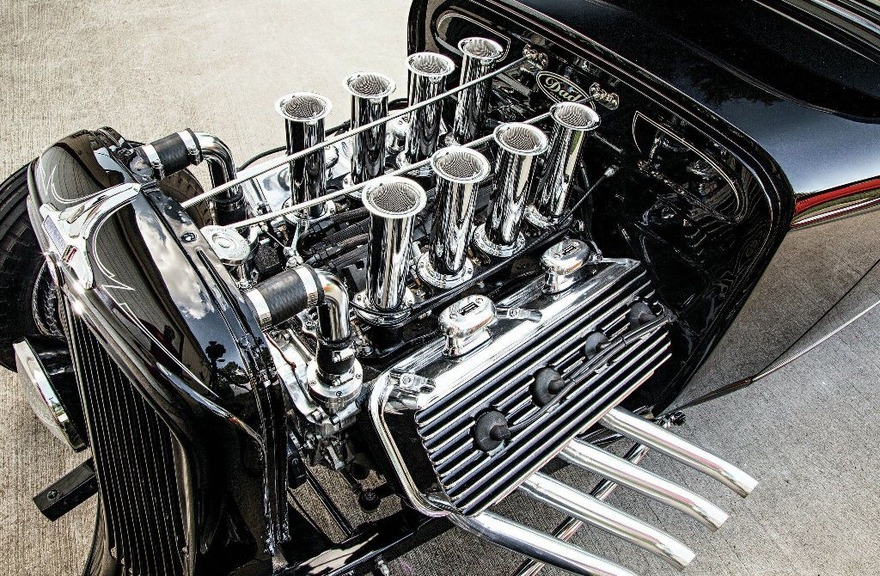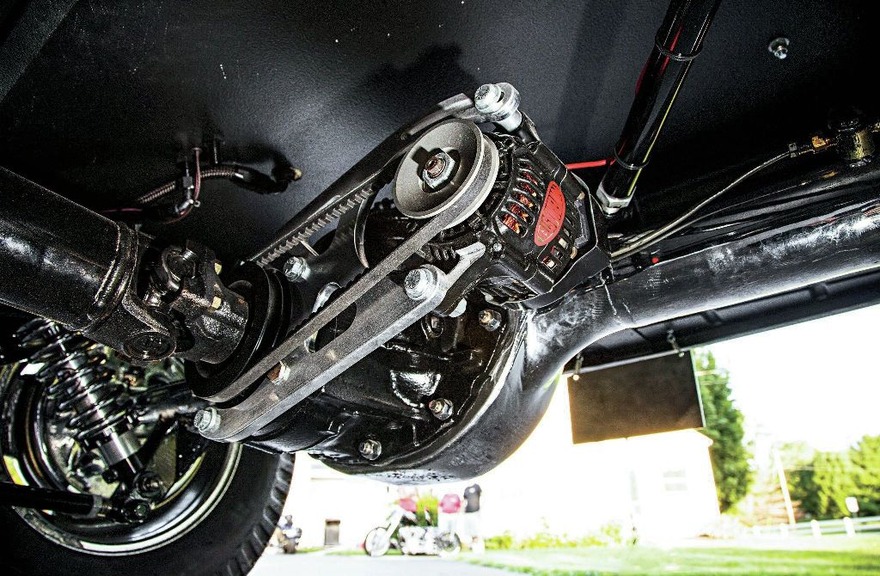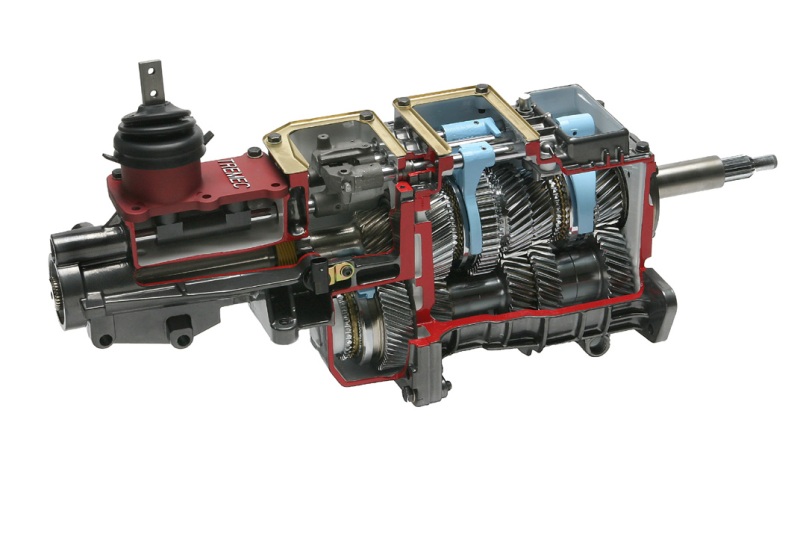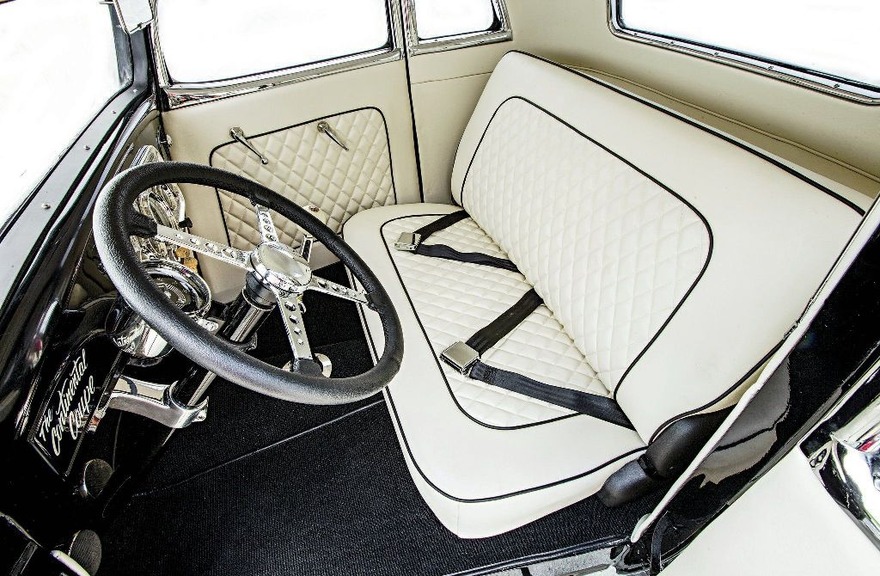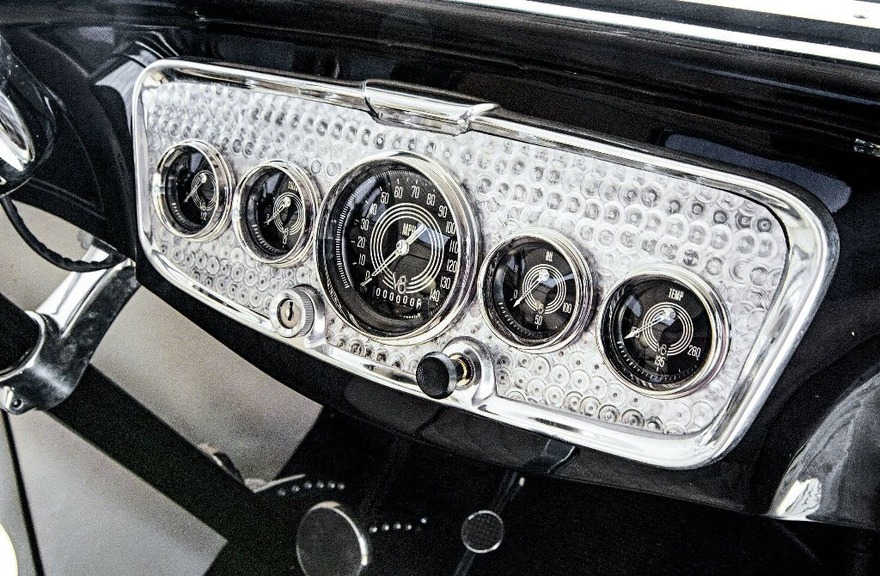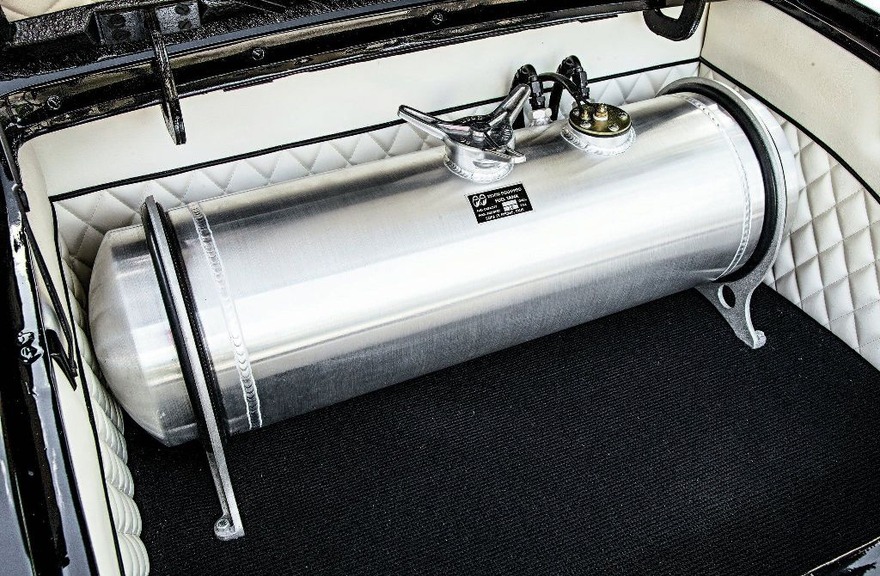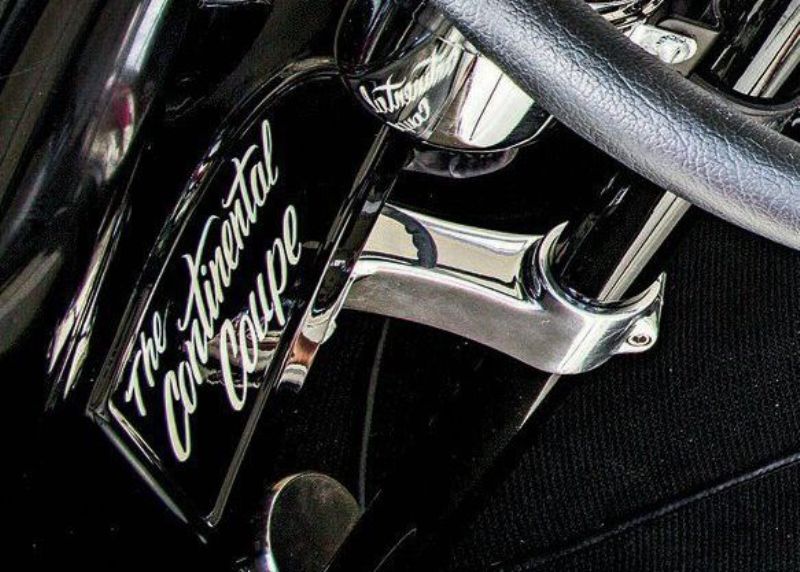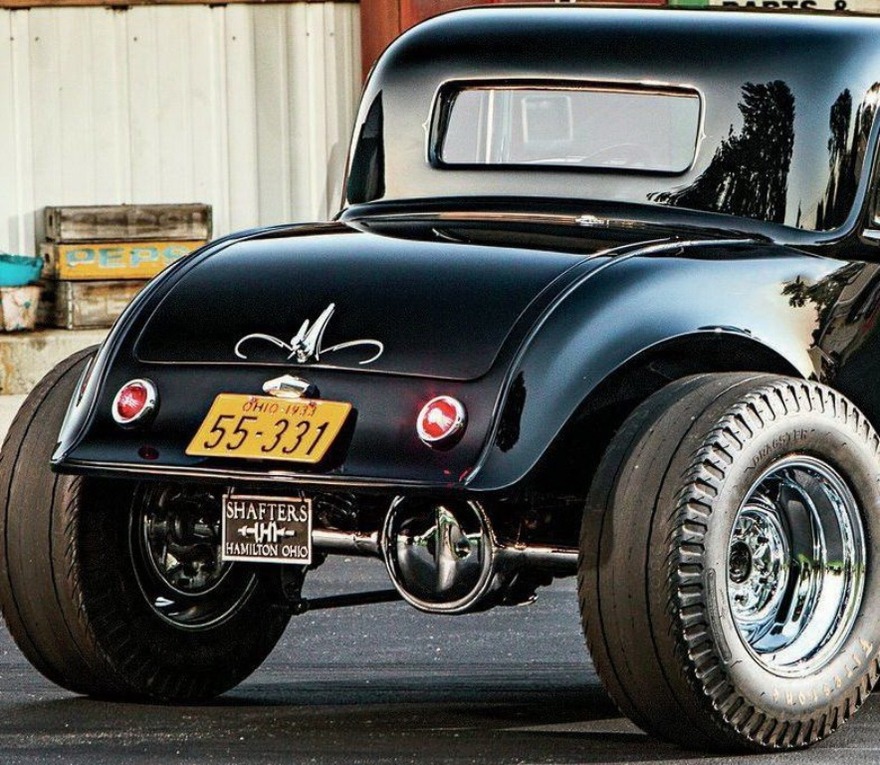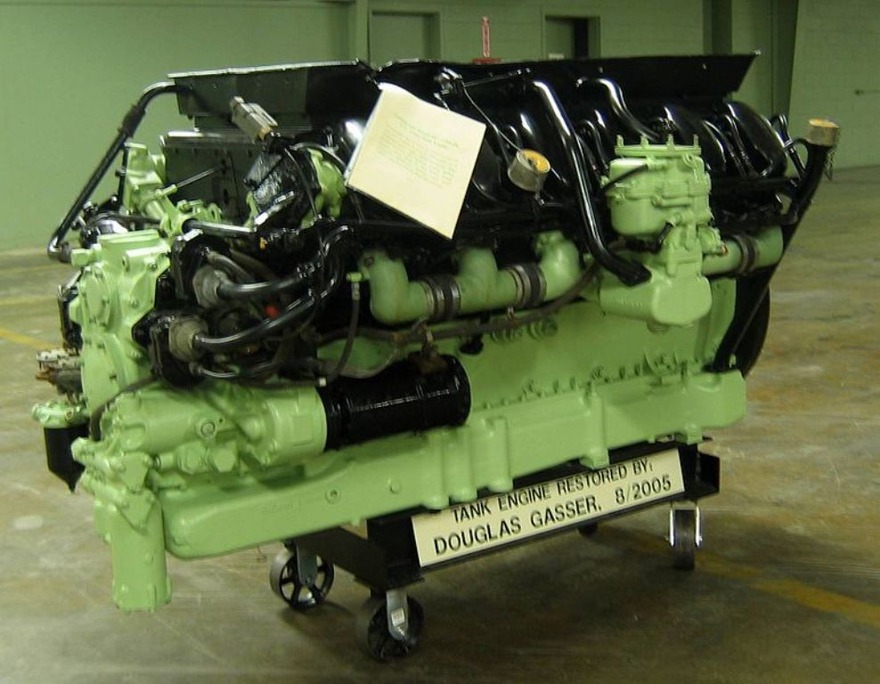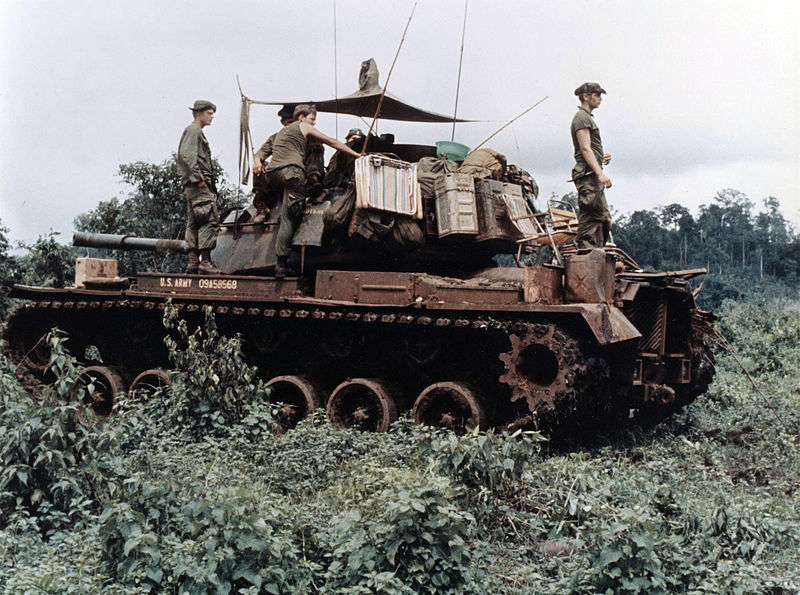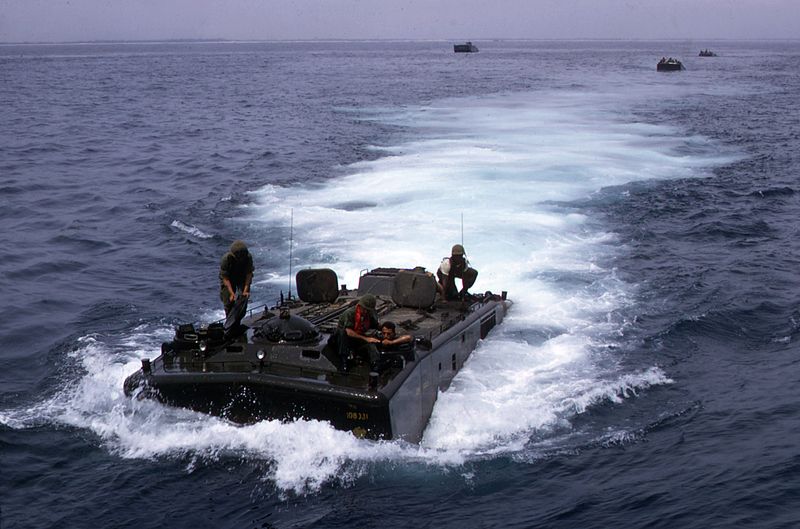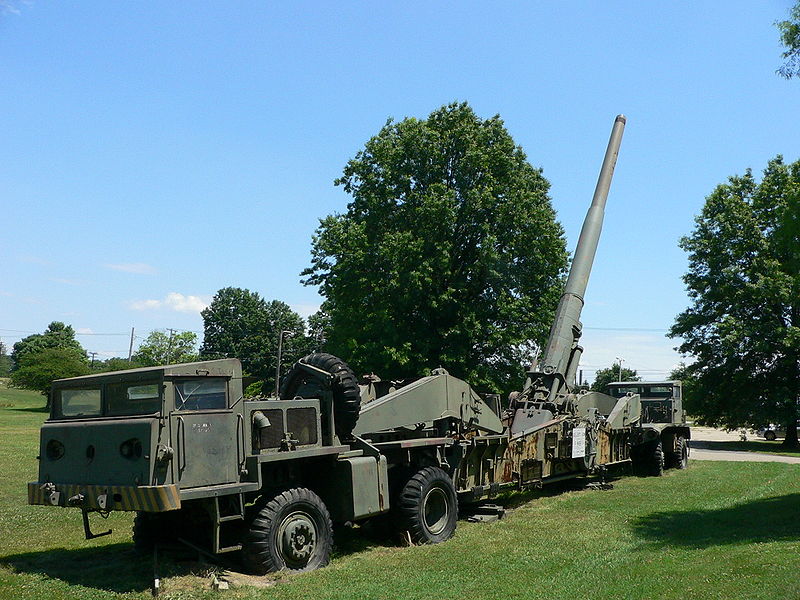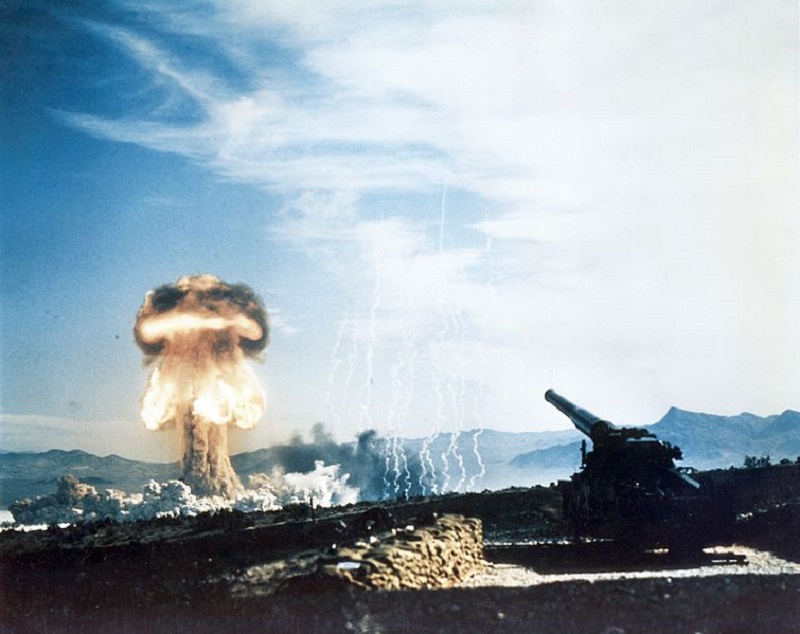The hero of this material is a unique machine. Officially only a few have survived till our days, according to various estimates not more than 4–6 pieces! We are talking about Continental Coupe 1933 model year, but rather the model Flyer. It was produced only one year, while having a rather bumpy history.
Bankruptcy No. 1
It all started back in the early 20's with the Durant Motors company, which was founded by William «Billy» Durant. Former managing Director of General Motors, received a loud resignation (second time) from the Board of Directors of the company and the bankers of new York that funded GM, decided to settle accounts with their former employers. He wanted his own company in the end to compete with the giants of the American automotive industry, including, of course, and GM. And at first all went according to plan.
Purchasing on the market a range of small independent brands, Durant Motors began to produce a real range of cars, including luxury and even freight moving on the market under various trademarks, including, in fact, Durant.
One of the know-how of Durant was that he used the principle of «kasha», using components from different suppliers, including progressive valve inline 4 — and 6-cylinder Continental engines, and from the beginning to the end on all their models. By the early 30's promising the company still couldn't compete with the giants of Detroit, and the main plant of Durant Motors in Michigan was purchased by the same GM, after serving her faithfully until 2005.
The Durant died in poverty at age 85 in 1947, the year. However, the advantage of beginning in one form or another continued life. One of the stamps Durant was De Vaux. It is De Vaux-Hall Motors from its plants in the town of Grand rapids, Michigan and Oakland, California, nearly became the successor of the failed Empire of Durant.
The founder of this company was Norman De HEU, who occupied one of the higher ranks in Durant Motors. He started his own production of cars named after himself «under the wing» of Durant in 1931, the year. Interestingly, the body De Vaux was built by the Hayes Body company. She leased a factory right next door to the space De Vaux, supplying the «body» of cars on a specially built between the buildings the bridge! At the same time in Oakland a small-scale was going to machine this new brand.
Unlike Durant, automobiles De Vaux was completed somewhat more archaic (and cheap) ninalapinta 6-cylinder engines designed by Colonel, engineer Albert Hall. (His company was famous in those times the release of various engines, especially aviation). However, these engines were produced by order of the same Continental Motors Company nearby in Michigan...
Engine De Vaux was based on the motor Continental 22-A, in which Hall made constructive improvements, including the cylinder block.
The bankruptcy of No. 2
Despite the loud pr-the company, as a result, the company De Vaux produced only a single model 6/75 with a wheelbase of 113 inches (2.9 meters), while in fact her body was the same Durant with minimal facelift. However, it was not the result of special pride of the new company.
Restyling ordered myself count Alexis de Sakhnoffsky, who worked at the time in Hayes. Subsequently his name became an integral part of the history of our heroine. The main trump of the company was 6/75 in the coupe version. Given its relative cheapness and competent advertising company, first orders are «pushed». But on the threshold stood the «Great depression», and the second tale is also not true.
No sooner had a plant in Auckland to launch the production, was closed, and in February 1932, the year after the release of nearly 5 thousand cars, De Vaux-Hall Motors simultaneously with maternal Durant filed for bankruptcy... the Debt is only one De Vaux creditors amounted to about two million dollars, among which a major was the engine supplier, which the company owes nearly half a million dollars. Not being able to pay the company, including a plant in Michigan, just went to Continental. And according to some was «written off» only half the debt, while actually at the factory in Grand rapids paid only 40 thousand $...
From that moment began a very brief history of the brand Continental. However, its first cars were referred to as the Continental-De Vaux, as well as producing their company, though often the name was written on the contrary — De Vaux Continental. Under this brand was released quite a few less than a thousand cars (from stock), essentially the same 6/75, in turn based on Durant-Ah. The only Continental still upgrades to the car from the point of view of the engine by installing your own 6-cylinder 32-A-6 displacement 3.5 liters, develops a bit more strength.
This machine was called the De Vaux Continental 6/80, and was offered in several body styles, including the cheapest one coupe that cost in reality is not so little at that time almost 800 $. «New» was going on the same plant Grand rapids, but it was initially clear that it is obsolete. To 1933-th model range «continentality» seriously «rolled up sleeves».
Bankruptcy No. 3
Become archaic in the whole Durant/De Vaux a thing of the past, and these names, while at the end of 1932 officially born Continental Automobile Company. In «menu» the new company offered three brand new models, and had little or nothing to do with the old DeVaux-Durant. Each of the models, in turn, had a whole range of bodies. Even a budget 4-cylinder Beacon on a short 101,5-inch chassis, was offered in seven versions, from sedan to 4-door sedan. The other two new models are installed the same 6-cylinder engine, and 6/80, and rear axle. In all other respects they were brand new. They were «average» Flyer and luxury Ace, stationed respectively at 107 and new 114 inch chassis.
Again their design was drawn all the same count Alexis, try on giving new models of their favorite aerodynamic shapes, especially the coupe versions. In addition to pretty streamlined shapes, a distinctive feature of all the so-called Continental steel doors-suicide — opening in the opposite direction against the movement, thereby facilitating access, especially in the version of the coupe...
Alas, this engine exclusively for the company, their venture also was a failure — ahead loomed another bankruptcy. For the first year total of all three models were sold just over three thousand cars. Moreover, two expensive models was not profitable and was discontinued, less than a year since their launch. Only low-end Beacon, which was worth only 355 $, lasted two years. However, his range of bodies in the second year was reduced from 7 up to three options.
This is not to say that in reality in 1933-the year it Beacon version Roadster with a price tag of 335 $ was the cheapest car on the U.S. auto market. (According to some sources it is the cheapest machine of American production in 30 years) But it did not help and Beacon suffered the fate of his older brothers — on a court yard there influence of «Great Depression». In 1934, the year it was released less than a thousand Beacon-s (a total of 4 thousand cars all three models), and then, like his predecessors, has already surrendered himself and Continental to compete with the giants «Detroit», and even in times of economic crisis, it was simply impossible...
Most interesting is that in 1935, the year the remnants of Continental acquired all the same Norman De HEU, but to revive its brand, it has not, in the end after selling them all the same GM... So we can not say that for some time all the machines Continental was produced under license in Canada for the local market, however it was rather on modern terminology «screwdriver Assembly», which was discontinued in 1933, the year...
Sorry not hot-Rod?!
The rarest of the three Continental models was the average of them is Flyer. It also offered all the body — from 4 door sedan to convertible.
Taking into account released a total of less than thousands of pieces, it is not surprising that any one of them — a considerable rarity. Today these cars are among the rarest in the world, although frankly, they are more interested in only the biggest fans of the American automobile industry. As already mentioned, today there are not more than about half a dozen coupe Flyer, as, for example, is «lighted» and was immediately sold on one of the shows already in 2003-m to year.
Most interesting is that unlike shown in the photo «killed» coupe, Joe De Bord have found out in Dayton (Ohio), perfectly preserved and complete copy. That is why the material has received such a title... Flyer wheelbase 107 inches (2.7 meters), for the sedan was frankly too small, but for a coupe at the time. Similarly, this coupe seems to be just created for hot-rodding — thanks to the passion for aerodynamics count Sakhnoffsky.
According to some sources, a graph not only «had a hand» to «metal», but the suspension new Continental where he used his experience with the European giants of the auto industry, focusing not only on comfort and sportiness. For example, the classic in those days the front suspension with transverse leaf springs located with one (in other words a dependent) has been strengthened limiter, ustanavli inherent in this design, the swinging body from side to side. In the rear suspension and did was used the progressive scheme with four powerful elliptical springs which were analogous to the modern multi-link rear suspension. Moreover, in those days, often used a closed drive shaft — aside from frame one of the force elements was a powerful hollow cylinder rigidly connecting the rear axle with the engine. On the Flyer was used today on standard open driveshaft.
The new owner of the rare coupe Continental Flyer loved the design line of the Comte de Sakhnoffsky, but he wanted to get on base it is a real hot rod. The transformation required to eliminate these elegant wings, and in General in the end was left from the original a bit. Of course, all this might upset fans-the purist, but definitely will please the eye and mind of hot Rodder...
Of course hot-Rod!
In many respects Joe relied on professionals in the field of hot rods. He turned to Zack Zipperian from Dadz Motor Company, by a happy coincidence, living in the same town liberty township (Ohio). Exactly Zach was responsible for the transformation of the classical coupes of the 30's in a real hot rod, after which it is rightly emblazoned on the backdrop of his creations to shows and rallies, like here at the exhibition, Cavalcade of Customs in Cincinnati.
De Bord is also actively involved in the works — for a start were made the usual hot rods «channeling» — the fit of the deeper body on the frame, plus «the choppers» — cut strips around the perimeter of the cabin area in the stands. However, he wanted some of the original appearance from the front that hid the powerful Hemi. No sooner said than done!
Zipperian in turn outsource part of the «tin» Josh hilyard from Highley's Hot Rods. Then out cut out stands almost 9 inches, with some increasing rear side Windows.
Front in front of the windshield tightly brewed mounting space «janitors» and openings for cooling the engine. Naturally with machines are gone not only four wings, but connecting them around the perimeter of the footrest, as well as the original tank at the rear. Thus, imposing coupe is instantly turned into lean sports «horse».
Along the way, haili worked with rust, although as such on the 80-year-old coupe was not so much — unlike what is depicted in these photos... After working in Highley's Hot Rods body went to Dave Potts from Leadfoot Speedshop on a «facelift». In order to correspond to the «choppers» from the «grill» cut out almost 5 inches.
After Dave brought order to the roof and has completely redesigned the remains of the engine compartment, especially the «firewall». Normally this element should not be visible from the outside of the car, however, classic hot kind the hood itself is absent, and this means that all the hood just has to have the most aesthetic appearance, including even the most utilitarian sites.
Dave used the stripes from the hood, preveiw it to «firewall» right in front of the windshield. And only after that the body went to Josh's Show in his «plastering» where woge coupe coated glossy black. Meanwhile, in Dadz Motor Company was in full swing with the chassis.
... to hot-Rod...
Front Zach not only seriously narrowed the frame, but also produced «Boxing», completely changing the profile from rectangular to square. In other words the main power element of the coupe was completely changed.
As the front suspension used the usual for hot rods «cross-section» from a 32'Ford with longitudinal rods, of course covered in chrome. To further reduce the height and give a wedge-shaped planting installed lowered front axle from Super Bell.
Archaic sites gave way to modern: from Vega steering and the front wheels were used specific «hidden» disk brakes from SO-CAL Speed Shop. Behind «hid» 9-inch axle Bronco with gears from Currie. It is attached to the frame through multi-link suspension that uses a specific custom triangular levers, and the QA1 shocks have 18 degrees of adjustment.
Not to detract from the front suspension, the rear axle is also generously coated «chrome»... There used wheels Stockton Wheel — 15х5 front and rear 16х10 that shod pseudo-slicks Firestone, stylish cut at the sides, giving the wheels the look «a La» hot rods of the 50s. It's all good, but nothing screams «hot rod» as exhibitionistic flaunt V8, the more powerful Hemi. Nothing, except Hemi, with a Hilborn injector and two rows of boldly rushing into the sky chrome «headers» (pipes, air intakes), and even classic exhaust «Sumi» in the form of a brazen series of tubes-obrobka on the edges and no mufflers. This is the essence of the original hot rods of the mid-20th century...
Perhaps the real fans of «America» will be upset, because there's no carburetor. However, it is wished this De Bord is a modern engine with its inherent relatively calm «drivability», along with more stylish look, excluding not as aesthetically pleasing profile of the engine when using the classical scheme with a carb... of Course the electronics are also «modern» EFI and the Holley computer fuel injection Manager itself. The engine did Cook office Machine from Winchester town, located in Ohio. As a «Guinea» was elected classic 331-inch (5.4 liter) unit Chrysler, which after repair of the bore engaged minder Matt Davis and Zach personally Zipperian. It was «placed» forged pistons Ross Racing and additionally a balanced crankshaft. Sports camshafts Isky 270 ranked stock in the steel cylinder head, which was decorated incredibly stylish custom moulded covers from Imperial Speed&Custom.
In General, as is typical for such «naked» hot rod, here is literally everything in the engine space adds chrome picture, including a water «pump» or Wieand polished distributor cover from Hot Heads...
... and again —Reddit!
Just so as not to spoil this idyll chrome alternator hid on the rear axle, and it is driven from the cardan.
As for transmission, it naturally has been used exclusively with the «mechanics» is a modern 5-speed gearbox Tremek TKO500 with a Hayes clutch and a Hot Heads flywheel, and hydraulics from Mcleod Racing.
You would think that the person who wanted a manual transmission to the powerful Hemi (his real torque indicators, the creators left a secret for now) limited to the athletic ascetic in the cabin. There it was! On the contrary, Joe De Bord ordered a complete hot rodby «ground». Trim did Tony Galloway Upholstery from Cincinnati. As the seat was used old-fashioned «bench» from the Dodge minivan, and door cards covered in vinyl color of Vanilla Cream, stylishly stitched with diamonds and adorned with black fringing. In the tone of the engine compartment «chrome» plated handle not only archaic Windows and doors, and even interior moldings around the Windows, not only lateral, but also back!
Similarly chromed and large 15-inch four-spoke steering wheel from LimeWorks as well as mounted directly on a nostalgic unregulated steering column tachometer and even stylish custom pedals, made deliberately small size... On the seats as safety belts used «aviation zone», which will not allow to slide to the driver with the passenger on the bends... Devices retro bow from Classic Instruments «implanted» in the polished panel from Grace&Co. Note the odometer — at the time of this, obviously the first photo-session «under the wheels» just born hot rod was only a couple hundred feet...
Attention to detail, however, as usual, for true hot-rudderow, deserves some respect. In the salon, as indeed in the whole car, there is nothing superfluous, though, there's something there, you can see a small whim. That only is exactly the same vinyl upholstery, as in the cabin, but in this case... in the trunk, where «perched» original tank from a California company, Moon Equipped, of course also covered in «chrome»...
For whim can be attributed the inscription of The Continental Coupe, which flaunts to the left of the steering column. It looks like as if the driver inside the car what it is. Perhaps the fact that Joe himself De Bordes and his older brother Henry was interested in cars back in the 50s, and it was then that they first learned of the existence of this coupe from Continental.
And now, after more than half a century, Joe's dream became a reality. And on the first show, which became one of the most prestigious forums Detroit Autorama, held regularly since 1964, the year that Continental Coupe took some of the main prizes — Pro Pick («Choice of professionals»), as well as the award Best Traditional Coupe («Best traditional coupe»). Obviously, the answer to the question is to restore or hot-redditi was selected.
Continental Motors Company
Let the actual car part of the history of Continental Motors was, to put it mildly, short — just a couple of years. In reality this company is a real world Grand in engine, based over a hundred years ago, in 1905-m to year. From the outset, the Continental built engines for truck manufacturers and industrial — ranging from pumps, to industrial and aviation.
Continental and stood on the famous American taxi Checker or a very small batch exotic Playboy... she Also actively supplied the motors for more than 20 truck manufacturers... The company has left its mark as a manufacturer of gas turbine engines, too, by the way, used not only in aviation, but in a unique sports car Howmet TX.
Not less known and in Continental army. These engines many years of the second half of the 20th century was set in motion almost the entire fleet of U.S. Army (including the most common truck M35), as well as most of the armored vehicles made in the USA. It is the «under armour» Continental find special reputation, and originally it was about aviation radial engines. They have started to put pre-war pre-war M3 Stewart, and then on the most mass in the history of the American tank M4 Sherman.
Most interesting is that it was not only about aviation «stars», but also the air-cooled engines. And yet, they find a reputation of being very reliable, including the African theater of war. After experimenting with the «opposition» in the 50s, the most common eventually became diesel monsters V12 AV-1790 at 29 liters, which also had air cooling.
Engines of this family were equipped with all three generations of Patton tanks including the M48, which became in many respects the personification of the Vietnam war.
It is noteworthy that this engine was installed not only in its successor the M60, but over 25 years they were equipped with the famous Israeli Merkava first three generations, only in 2005, the year replaced in diesel engines water-cooled competitors... Continental engines since the days of World war II were set on many American self-propelled guns, engineering technology, and all the amphibious LVTP, from the first models until the 70s, when the «continentalized» all the same «games» competitors...
Not to say that the motors of this brand were equipped with tractors, used for cannon «Atomic Annie».
It has, perhaps, a dubious honor, to be a single barreled weapon in U.S. history, really vystrelivshey nuclear charge — this happened in the framework of nuclear tests in 1953, the year...
Separate the head of the company is Continental Aircraft Engine Company, founded in 1929, the year, and later became Continental Motors, Inc. It is today one of the world's major suppliers of engines for light aircraft. However, despite all the success, after difficult experiences her crisis of 2009 year, as a result, this division became the property of the China...

